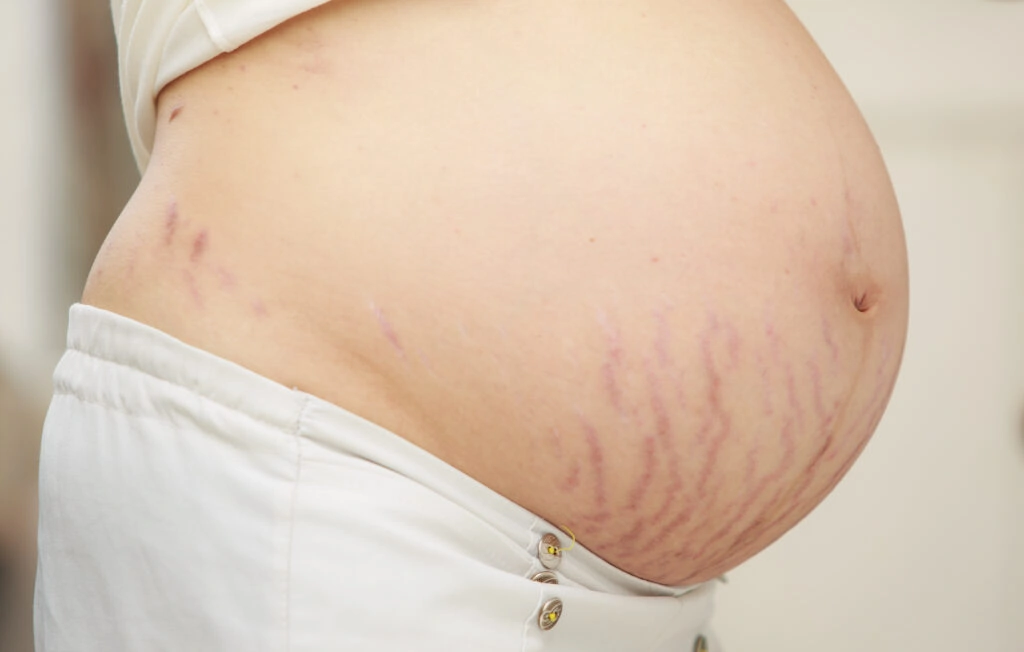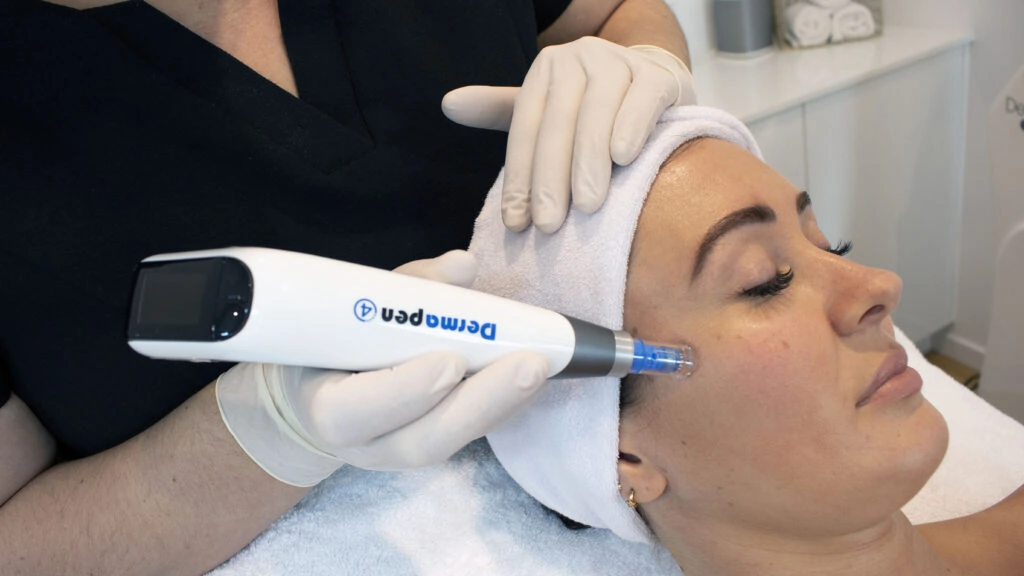Stretch marks can be the unspoken thief of many people’s self-confidence. We’ll always advocate for loving the body you’re in, but we completely understand that in today’s day and age, that may be easier said than done. We truly value you and your needs and we want to help build that confidence in any way we can.
What are stretch marks?
It can be tricky to identify exactly what stretch marks, or striae, are. Most people have a basic understanding of the stretch mark scars that can appear but might not fully grasp what they are. Essentially, stretch marks are the result of your skin being stretched further than it’s used to in a short time frame. Some examples include pregnancy or having a growth spurt as a teenager.
When the skin stretches in this way, the elastic fibres that can be found in your skin may tear. Once that occurs, these stretched areas form long, thin scars which are widely known as stretch marks.
Are stretch marks normal?
The internal question that many people can wrestle with quite often is asking if stretch marks are normal. It can feel like stretch marks are abnormal, but it’s incredibly comforting to remember that they affect roughly seven in 10 women and four in 10 men at some point during their lives. It may not be obvious but stretch marks are common – and absolutely normal – so you don’t need to worry about being an outsider in this situation.
How are they caused?
Stretch marks do just randomly appear sometimes. It’s important to understand, though that there are other causes. There can be a wide variety of causes behind stretch marks appearing.
Weight gain
When you are younger, and you experience rapid growth spurts, this can lead to stretch marks appearing. Your body is growing upwards while naturally gaining weight — so it only makes sense that your skin would stretch. The faster you gain weight, the more likely it is that you will have stretch marks on your skin.
Bodybuilders can also experience this, as they put on a significant amount of muscle mass very quickly, which can lead to stretch marks.
Medication
Medication can also be a cause of stretch marks. Unfortunately, some side effects of taking certain medications can be weight gain, bloating, swelling or a range of other physical changes. This can in turn lead to your skin stretching and as a result, stretch marks may appear.
Substances that contain hormones, such as birth control pills. and substances that ease inflamed parts of your body, such as corticosteroids, are examples of medications that can cause stretch marks on your skin. If you’re concerned about stretch marks resulting from the medication you’re taking, you can have a conversation with your doctor about what steps you can take to minimise those stretch marks appearing.
Pregnancy
When stretch marks come to mind, pregnancy is perhaps the most obvious cause that comes to mind. New stretch marks typically appear during and after the sixth-month mark in your pregnancy. When your baby is growing, naturally your body will grow and expand to accommodate this new little bundle of joy.
This may not be the only reason that you might see stretch marks during and after pregnancy, though. We all know hormones can change wile you’re pregnant, but one lesser-known side effect of this is that your skin may become more susceptible to tearing.

Medical Conditions
Some health conditions can lead to stretch marks. If a health condition involves any sudden growth, weight gain, or skin problems, stretch marks may occur. There are also medical conditions that present physical changes that can also lead to stretch marks appearing.
Examples include Cushing’s disease, and other rare conditions such as Ehlers-Danlos syndrome or Marfan syndrome. Having these medical conditions could make you a more likely candidate to find stretch marks appearing.
Where can stretch marks be found?
You won’t be able to find stretch marks on your face, feet or hands, but they can appear almost anywhere else on your body. The most common places that stretch marks will be found are in places where your body normally stores fat. Those areas like your hips, thighs, belly, chest or bum. They might also be visible on your lower back or on the back of your arms — both your lower and upper arms.
Your family genetics may also play a part in getting stretch marks. If your mother found that she had stretch marks appear during pregnancy, you may find that they appear for you as well.
What do they look like?
When you develop stretch marks, they can take on a variety of physical characteristics when they show up on your skin. An early warning sign that you are beginning to develop stretch marks is when a certain area of your skin appears flattened, thin and has a pinkish hue. This particular area may also become inflamed and itchy as is common in early stretch marks.
After this initial stage, early stretch marks will look slightly swollen reddish or purplish lines become visible, running perpendicular to the original skin flattening. After those lines have been there for a while, the new stretch marks will lighten in colour and become much less visibly obvious.
What treatment is available?
Stretch marks are totally natural and at Chantal Louise Skin, we don’t think they should be considered a flaw. We do understand though, the insecurities that can sometimes accompany these stretch marks. To treat stretch marks, and reduce their appearance or visibility, you can find a multitude of resources, creams and skin products that claim that they have magical stretch mark healing power.
The reality is that it’s not that easy to simply get rid of stretch marks. So, it’s important to understand what treatments will actually help make stretch marks less noticeable.
Derma pen — Natural collagen production
Getting a Derma pen treatment has proven useful in smoothing over and helping to fade stretch marks. Otherwise known as skin needling, this treatment will deliver significant results for stretch mark scars engaging the Dermapen 4TM technology. This instrument will glide over your skin while creating a large number of fine fractional channels.
After these channels have been created, your body will begin a natural reaction that triggers the amazing process of repairing the skin. This induces new collagen and skin cells to be produced, which will encourage stretch marks to smooth over and begin to remodel.

LED Light Therapy
Another helpful treatment to consider is using LED light or laser therapy. This laser treatment will break up scar tissue and like the above treatment, will cause a chain reaction in stimulating the production of collagen.
Using clinically proven red, blue and near-infrared light, the Dermalux LED machine penetrates into the many different layers of your skin to target and deal with stretch marks. This laser treatment will help to bring life back into your skin and give you a whole new sense of confidence.
How do I decide which treatment to have?
There are a whole bunch of factors that will influence your choice when looking at treatments and solutions for your stretch marks. These can include how old the stretch mark is, what your skin type is, how much you have to spend, and what your overall situation is.
The best course of action to determine what treatment is best for you is to talk to a professional skin therapist via a skin consultation or online consultation. We’ll be able to have an in-depth conversation with you about your needs and what factors need to be taken into consideration before your treatment.
Ready to chat about how we can treat stretch marks? Book your one-hour, $99 skin consultation today.
